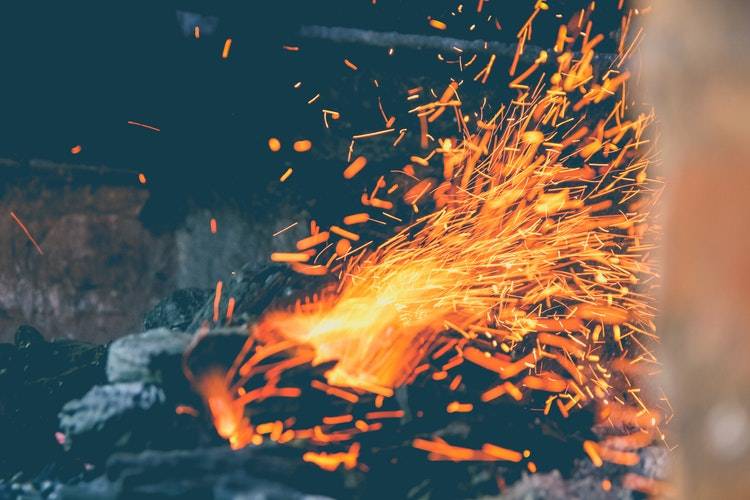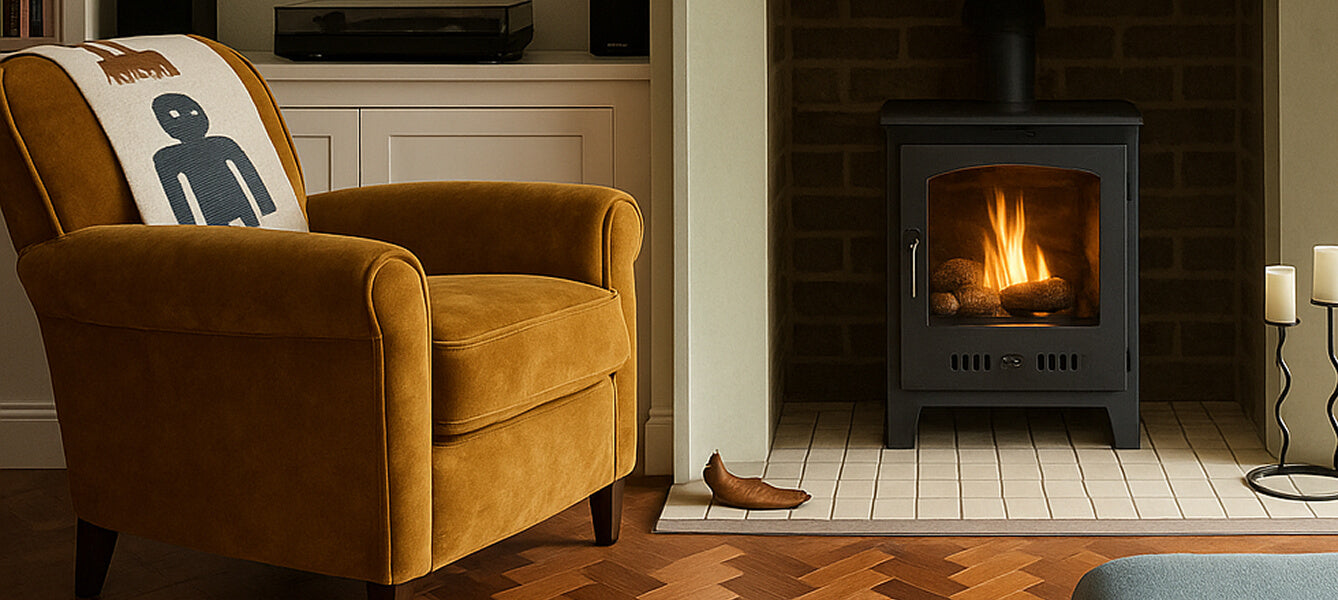
Installing a Wood burning Stove without a chimney
During the colder months in the UK, of which there are many, you might be yearning for the comforting warmth of a wood burning fire to help take the edge off those dark winter evenings. For those of us that live in a property that could be termed as a 'contemporary build', there is the common concern that it is impossible to run a wood burning fire stove without a chimney, leaving us with the choice of a gas or electricity-based heater. This is a misconception, and in this article we will explain how you can install a wood burner with no chimney even if you don't live in a Victorian or Georgian era property.
What’s a Solution?
The foremost solution when it comes to installing a wood burning stove is the use of flue components to do the job. This can be done by self fitting, if you are confident enough, or by calling in a professional installer. These flue solutions essentially provide a stainless steel chimney for homes which don't have a traditional brick chimney. The fluepipe itself is usually manufactured with roughly an inch of insulation between the outer and inner skin.
You will be provided with a range of components in various shapes and sizes - including flashings, bends, supports and an inspection chamber - according to the requirements of your property. When completed, the integrated flue extends from a terminus on the roof of a building, down to the wood burning stove itself.
The choice of whether to run the flue outside and up the walls of a property, or to install it rising up through the inside of the building is down to you. In a kitchen where there is limited space, this might make the most sense, whereas in a living room, the flue might be used as a focal point.
Many homeowners choose to create a traditional looking 'chimney breast' using more brickwork, or alternatively exposed flues can work well in more minimalist properties. It can be visually attractive to have the exposed flue matching the stove in colour - typically black or metallic - in the case of homes with more modern design.
How does log burner with no chimney work?
It is typically recommended that you seek expert help before attempting a DIY installation, but below we have provided you with a basic step by step guide:
1. In most cases the first stage in an installation is the stripping back of the wall, as far as the brickwork.

2. Now, a hearth must be laid and pillars can be added either side of where the stove will be placed.

3. The stove is then put into position, along with the flue extending up through the ceiling of the room.

4. With the hearth tiles laid and the stove in place, it is then the choice of the homeowner whether they wish to build a chimney breast or leave the flue exposed.

5. As far as the end of the flue goes, the height of the chimney will depend on its position relative to the roof and other parts of the building.

Maintenance and safety
In terms of wood stove maintenance, it is important to clean your stove and flue regularly. A large percentage of fires in residences are caused by the build up creosote in flues, so be sure you don't forget! By remembering to clean regularly, you will be extending the lifetime of the stove and flue, as well as improving its efficiency, venting the wood stove so its draft is likely not to deteriorate dramatically. Each stove will have separate cleaning instructions according to the particular model, but the aim of the cleaning game should be to keep the stove and flue as free from soot, creosote and ash as possible.
Then we get to what you should be burning - only dry and seasoned wood should be used in your stove, rather than other flammable materials such as plastic or paper (except when starting a fire with paper). Be careful of using any wood which you think might have been chemically treated - this can be very dangerous. Varnished, pressure treated and painted wood all come under this category. Finally, driftwood or green wood is also not suitable for use in a wood burning stove.
An alternative solution: A Bioethanol log burner without chimney!
If you want the warm glow and visual qualities of a burning fire, but are reluctant to opt for a full wood stove installation, there is an alternative. The wood burning style bio ethanol fireplace negates the need for wood, a chimney, or cleaning to remove ashes and soot, simply requiring you to top up your biofuel when required!
